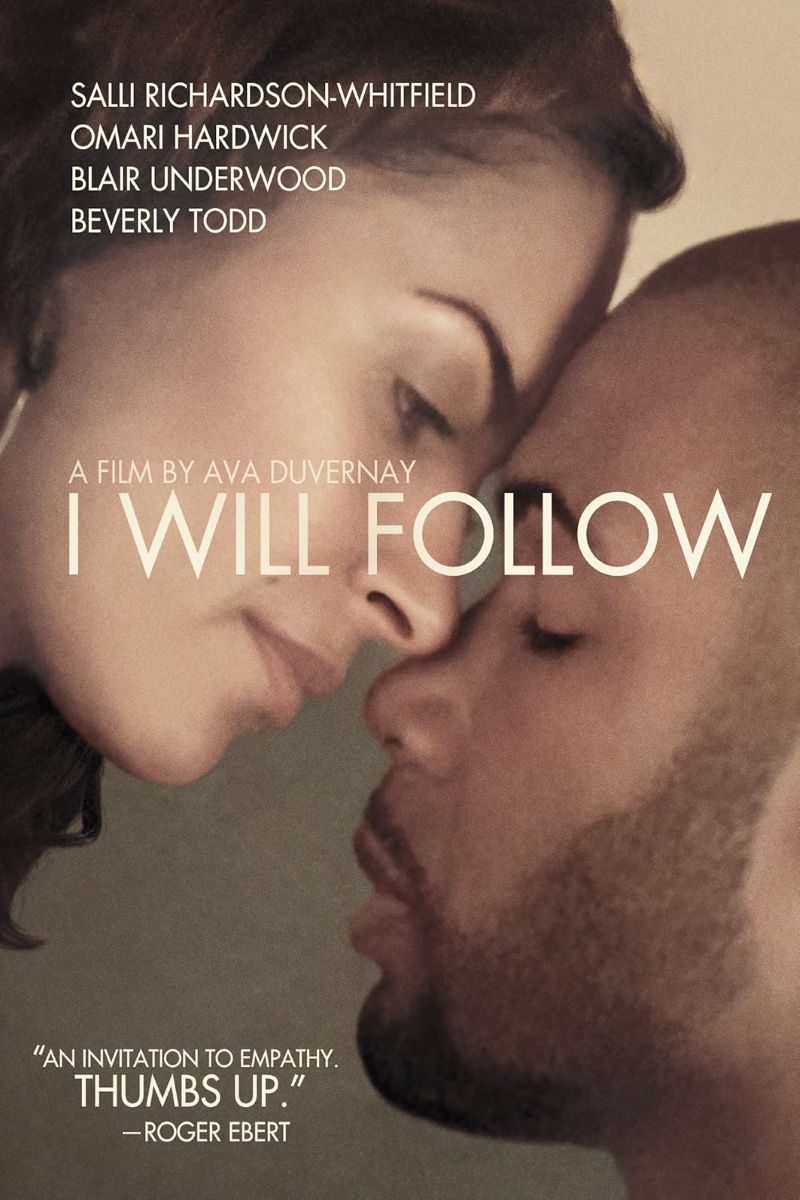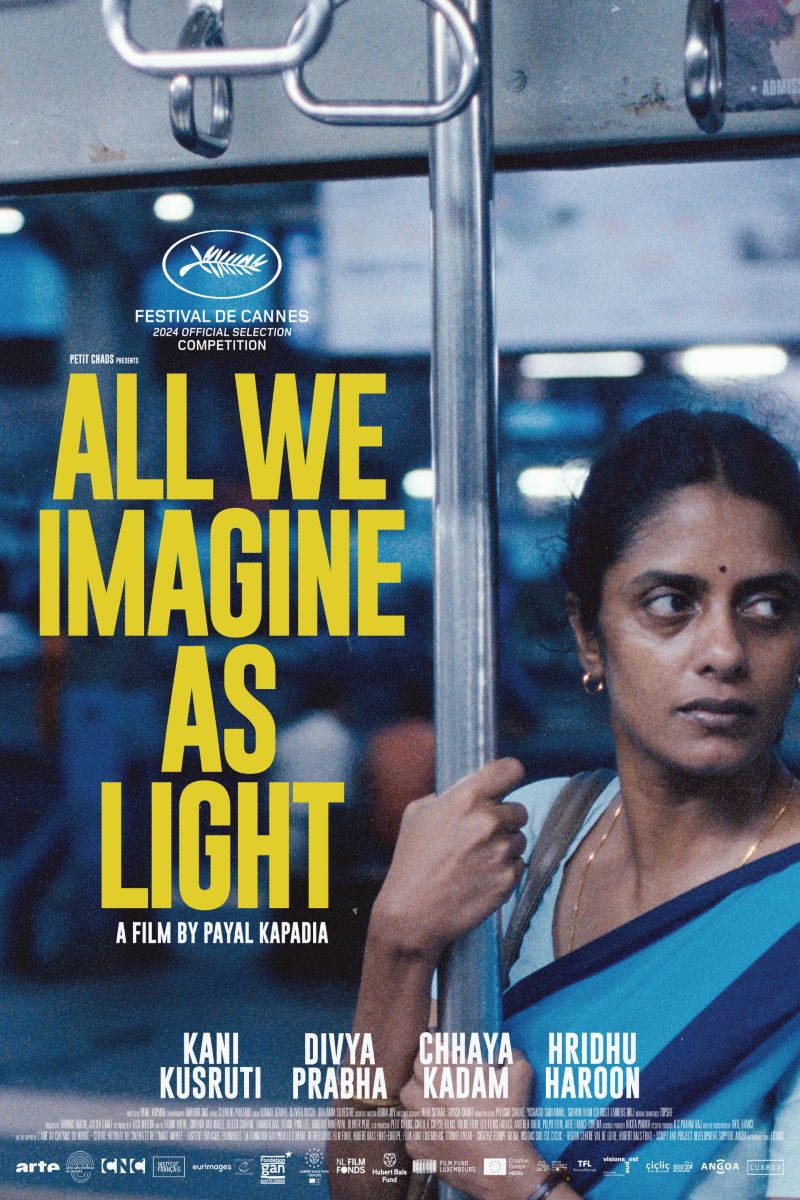
I Will Follow
I Will Follow
If you can't get something done, do it yourself. Ava DuVernay took this adage to heart and wrote, directed, produced, and financed this family drama about a woman grieving the death of a loved one. It made just a blip on the box office radar, but her debut feature offers a peek at the woman behind the camera.
Cast
Related Topics
🎥 Film Analysis & Review
Ava DuVernay’s “I Will Follow” stands as a remarkable achievement in independent African American cinema, marking the emergence of one of contemporary film’s most important voices while establishing new paradigms for authentic storytelling about grief, family, and community support. This 2011 debut feature demonstrates how personal narrative can achieve universal resonance when filtered through genuine cultural specificity and emotional honesty. Created with remarkable efficiency—shot in just six days for $50,000—the film transforms budgetary constraints into aesthetic and thematic strengths, proving that authentic stories require creativity and commitment rather than substantial financial resources. Through its intimate portrayal of a woman navigating loss while surrounded by loving community, DuVernay creates a work that challenges dominant narratives about African American experience while honoring the complexity of human relationships across difference and difficulty.
Revolutionary Independent Filmmaking and Cultural Authenticity
“I Will Follow” represents a groundbreaking achievement in independent filmmaking that demonstrates how authentic cultural representation can be achieved when filmmakers maintain creative control over their narratives. DuVernay’s decision to write, direct, produce, and finance the film herself ensures that every aspect of the production serves the story’s emotional and cultural authenticity rather than commercial expectations or external demands.
The film’s creation through the African-American Film Releasing Movement (AFFRM), which DuVernay founded to leverage black film festival infrastructure for theatrical distribution, establishes new models for how marginalized voices can reach audiences without compromising artistic vision. This approach demonstrates how cultural communities can create alternative systems for supporting and distributing stories that mainstream industry might overlook or misrepresent.
DuVernay’s background as a publicist in Los Angeles provided her with industry knowledge that she applied strategically to create maximum impact with minimal resources. Her understanding of how films reach audiences informed not just the production but also the distribution strategy, showing how comprehensive industry knowledge can serve artistic and political purposes rather than simply commercial ones.
Grief as Universal Experience and Cultural Specificity
The film’s exploration of grief transcends easy categorization by presenting loss as both deeply personal experience and culturally specific process that unfolds within particular communities and traditions. Maye’s mourning for her aunt Amanda occurs through interactions with twelve visitors who represent different aspects of her life and relationships, creating a structure that honors both individual experience and community support.
DuVernay’s treatment of grief avoids both sentimentalization and clinical detachment by showing how emotional processing occurs through daily activities, practical decisions, and ongoing relationships rather than dramatic moments or therapeutic breakthroughs. This approach reflects understanding of how real people actually experience loss—as ongoing negotiation between memory and present reality that unfolds through accumulated small moments rather than singular revelations.
The film’s portrayal of African American grief specifically challenges stereotypical representations that either idealize strength and resilience or focus on trauma and dysfunction. Instead, Maye’s experience reveals the complexity of a successful artist temporarily stepping away from her career to provide care, demonstrating how love and responsibility intersect in ways that require both sacrifice and support from broader community.
Female Independence and Economic Autonomy
Maye’s character represents a model of female independence that encompasses both professional achievement and personal autonomy while maintaining connection to family and community obligations. As a successful artist who has taken leave from work to care for her aunt, she embodies the complex negotiations that women face between individual ambition and caregiving responsibilities.
The film’s treatment of Maye’s economic situation—she is financially secure enough to take time away from work for caregiving—provides crucial counterpoint to dominant narratives about African American women’s economic struggles. This representation demonstrates how diverse experiences within racial communities challenge monolithic portrayals while acknowledging that economic privilege creates possibilities for choice that remain unavailable to many women.
Her decision to prioritize family caregiving over professional advancement reflects strategic thinking about values and priorities rather than lack of ambition or career commitment. The film shows how female independence can include choosing family obligation without sacrificing personal agency or professional identity, suggesting models for work-life integration that honor multiple aspects of women’s lives.
Community Support and Social Networks
Through the twelve visitors who help Maye process her grief and transition to new living arrangements, the film creates a detailed portrait of how African American communities provide practical and emotional support during times of crisis. Each visitor represents different relationships—professional colleagues, family friends, romantic connections, service providers—that collectively create networks of care and assistance.
The film’s structure, organizing around these visits throughout a single day, demonstrates how community support operates through ongoing availability rather than dramatic intervention. People offer help with moving boxes, share memories, provide emotional presence, and contribute practical assistance in ways that accumulate to create sustainable support systems rather than temporary relief.
DuVernay’s portrayal of these community interactions avoids both idealization and cynicism by showing how genuine care coexists with personal limitations, scheduling conflicts, and individual needs. The visitors have their own lives and concerns while still making themselves available to support Maye, reflecting realistic understanding of how social networks function to provide mutual aid across difference and difficulty.
Artistic Expression and Creative Identity
The film’s attention to Maye’s identity as an artist provides crucial context for understanding how creative work intersects with personal relationships and life transitions. Her artistic practice represents both individual expression and potential source of economic independence, while also creating connections to cultural communities and professional networks that extend beyond family relationships.
The portrayal of artistic work avoids romantic stereotypes about creative inspiration by showing how professional artistic practice requires discipline, business acumen, and strategic thinking about career development. Maye’s temporary leave from work for caregiving reflects practical decision-making about how to balance creative commitments with family obligations during specific circumstances.
The film suggests that artistic identity persists through life changes and emotional difficulties rather than being disrupted by them, providing perspective on how creative work can serve as anchor during periods of transition and loss. This understanding reflects awareness of how artistic practice functions not just as career but as fundamental aspect of identity and worldview.
Family Dynamics and Intergenerational Relationships
The relationship between Maye and her deceased aunt Amanda, revealed through memories and conversations with visitors, illustrates the complexity of intergenerational bonds that provide both support and responsibility across extended families. Their connection transcends simple caregiving to include emotional intimacy, shared values, and mutual influence that continues beyond death.
The film’s treatment of family obligation avoids both martyrdom and resentment by showing how genuine affection and practical necessity intersect in ways that make caregiving feel like natural extension of existing relationships rather than imposed burden. Maye’s decision to care for Amanda emerges from love and choice rather than guilt or social pressure.
Through glimpses of their shared life in the home Maye is now leaving, the film reveals how intergenerational living arrangements can create mutual benefit and companionship while also involving sacrifice and compromise from all parties. This portrayal provides counterpoint to dominant cultural assumptions about independence and family relationships that often devalue extended family connections.
Economic Resilience and Resource Management
The film’s production story—created for $50,000 in six days—parallels themes within the narrative about achieving meaningful results with limited resources through creativity, collaboration, and strategic planning. This connection between production methods and thematic content demonstrates how filmmaking process can reinforce rather than contradict the story’s values and perspectives.
Maye’s economic security, which allows her to take time away from work for caregiving, reflects broader themes about how financial stability creates possibilities for choice and generosity that extend beyond individual benefit. Her ability to prioritize family care over immediate income demonstrates how economic resilience can serve community and relationship values rather than just personal advancement.
The film’s attention to practical details—moving boxes, organizing belongings, making arrangements—reveals how major life transitions require both emotional processing and practical problem-solving that often occur simultaneously. This realistic portrayal honors the complexity of how people actually navigate change and loss.
Cultural Representation and Mainstream Visibility
“I Will Follow” contributes to broader cultural representation by presenting African American characters whose lives center around family relationships, artistic work, and community connections rather than crime, poverty, or social dysfunction. This representation provides crucial counterpoint to dominant media portrayals while avoiding both respectability politics and denial of real challenges.
The film’s success in achieving critical recognition and festival screenings demonstrates audience appetite for authentic stories that challenge stereotypical representations while maintaining entertainment value and emotional accessibility. This success helped establish DuVernay’s reputation and created opportunities for subsequent projects that have had broader cultural impact.
The creation of AFFRM as distribution strategy demonstrates how cultural communities can develop alternative systems for supporting and promoting their own stories rather than relying exclusively on mainstream industry gatekeepers. This model has influenced subsequent independent filmmaking and distribution efforts by other marginalized voices.
Performance and Ensemble Acting
Salli Richardson-Whitfield’s performance as Maye achieves remarkable naturalism through its refusal to provide dramatic emotional peaks or explanatory dialogue about her character’s psychology. Her portrayal shows grief and transition through accumulated small moments and interactions rather than single revelatory scenes, creating authentic sense of how people actually process major life changes.
The ensemble cast, including Blair Underwood, Beverly Todd, and Omari Hardwick, contributes to the film’s documentary-like authenticity through performances that feel like genuine conversations rather than scripted interactions. Each visitor brings distinct personality and relationship dynamic while maintaining consistent tone and emotional register throughout the film.
The casting choices reflect DuVernay’s commitment to representing diverse experiences within African American communities while avoiding both tokenism and stereotypical characterization. The actors create believable characters whose different ages, backgrounds, and relationships to Maye provide multiple perspectives on her situation and choices.
Visual Style and Intimate Cinematography
DuVernay’s direction creates visual language that emphasizes the intimate, domestic scale of the story while avoiding both claustrophobia and sentimentality. The cinematography focuses on hands, faces, and shared spaces in ways that reveal character relationships and emotional states without excessive manipulation or dramatic flourish.
The film’s attention to the physical details of moving—packing boxes, organizing belongings, cleaning spaces—creates tactile sense of transition and change that supports the emotional content without overwhelming it. This approach demonstrates how careful observation of ordinary activities can achieve profound emotional impact through accumulated detail rather than dramatic incident.
The use of natural lighting and handheld cameras enhances the documentary-like quality of the experience while maintaining professional production values that serve the story rather than calling attention to technical achievements. This balance reflects understanding of how visual style can support narrative and thematic content without becoming distraction.
Contemporary Relevance and Industry Impact
“I Will Follow” continues to influence discussions about independent filmmaking, cultural representation, and the possibilities for authentic storytelling within economic constraints. The film’s success demonstrated that audiences would support character-driven stories about African American experience when presented with artistic integrity and emotional honesty.
DuVernay’s subsequent career trajectory—including “Selma,” “13th,” and “When They See Us”—can be traced to the foundation established with this debut feature, which proved her ability to create compelling narratives that combine personal and political content without sacrificing either artistic achievement or cultural authenticity.
The film’s model of community-supported production and distribution has influenced other independent filmmakers seeking alternatives to mainstream industry gatekeeping while maintaining creative control over their projects. This approach has become increasingly relevant as technology and social media create new possibilities for reaching audiences directly.
Conclusion: Authentic Stories and Cultural Change
“I Will Follow” achieves lasting impact through its demonstration that authentic cultural storytelling can reach broad audiences when created with artistic integrity, community support, and strategic understanding of how films reach viewers. Ava DuVernay’s debut feature establishes principles and practices that have continued to inform her subsequent work while influencing other filmmakers seeking to tell their own stories with independence and authenticity.
The film’s greatest achievement lies in its creation of a new model for how personal narrative can achieve political significance through cultural specificity rather than universal abstraction. By focusing on particular characters in specific circumstances, DuVernay creates work that honors individual experience while contributing to broader cultural representation and social change.
Through its combination of emotional honesty, technical achievement, and innovative distribution strategy, “I Will Follow” stands as testament to the ongoing possibilities for independent filmmaking that serves both artistic and political purposes without compromising either commitment. The film proves that meaningful stories about community, family, and resilience can achieve both critical recognition and cultural impact when told with respect, creativity, and authentic understanding of human experience.
🏆 Awards & Recognition
- • African-American Film Critics Association Best Screenplay
- • AFI Film Festival Breakthrough Category
- • African-American Film Releasing Movement (AFFRM) Launch Film
⭐ Ratings & Links
Related Recommendations
Comments & Discussion
Discuss this video with other viewers
Join the Discussion
Discuss this video with other viewers
Loading comments...



